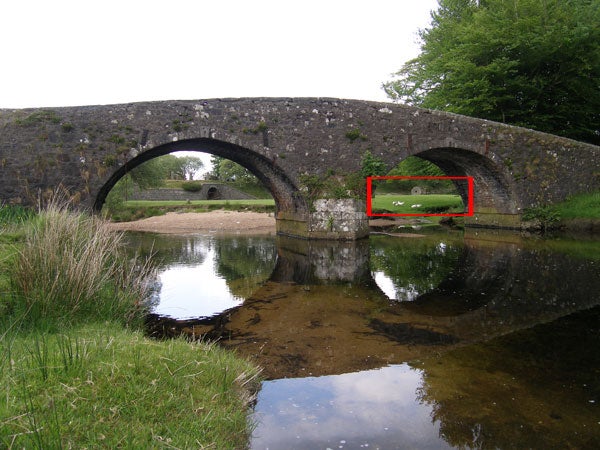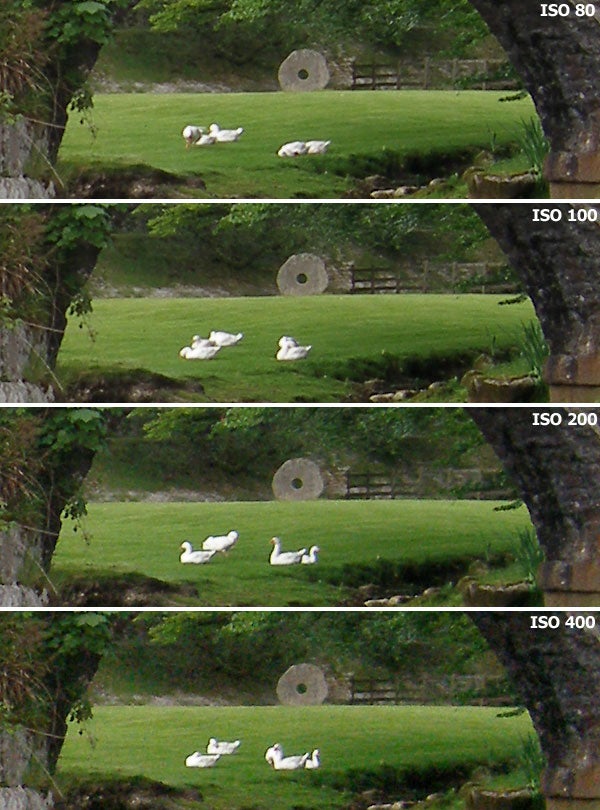Olympus Camedia C-7070 Review
Olympus Camedia C-7070
When you're a jaded journo, it's not often that a product takes your breath away, but that's exactly what happened when Cliff Smith picked up the C-7070.

Verdict
Key Specifications
- Review Price: £346.00
As a camera reviewer I get to see all the latest models usually before they’re in the shops, but I only have them for a week or so before they have to go back to the manufacturers. Most of the time this is a perfectly fine arrangement, however once in a while I get a camera that makes such an impression on me I’m reluctant to return it. The Olympus C-7070 is just such a camera. I’ve only had it two weeks so far, but I have to admit I’ve completely fallen in love with it. I wonder if the marketing team at Olympus would believe me if I told them I’d lost it?
The reason for my infatuation is simply that the C-7070 is one of the most capable semi-pro digital cameras I’ve ever used. It is superbly well made, has every feature I could ever want on a camera, and its image quality is absolutely fantastic. It has only one major drawback; it’s just so appallingly ugly. When I was out testing it, I kept having this overwhelming urge to put a bag over it.
As a piece of design the C-7070 is the perfect definition of function over form. It’s designed to do a job and do it well, not to sit around looking cute. If this camera was a car it would be 1989 Toyota Hi-Lux pickup with a bull bar, off-road tyres and a cement mixer in the back.
If the £345 price tag wasn’t enough of a clue, it’s obvious from the moment you pick it up that this seven megapixel beast means business. It is solid and chunky, and weighing a hefty 433g it’s heavy too. The uncompromising design is brutal but businesslike. If you painted it matt green and stenciled on a few serial numbers it would look like a piece of military hardware. It’s certainly built like it could be; with a solid magnesium alloy case and firmly mounted metal controls it’s tough enough to knock nails in with.
The main feature that sets the C-7070 apart from other semi-pro cameras is its lens. Most digital zoom cameras have a maximum wide-angle setting equivalent to around 35mm, which isn’t really very wide at all. The C-7070 has a zoom range equivalent to 27-110mm, which is actually wider than the conventional standard wide angle 28mm lens. Not only that but it uses ultra-high quality Olympus ED optical glass, the same as on the company’s professional SLR lenses.
The wide-angle ability gives the C-7070 a photographic versatility that has been sadly lacking from the top sector of the market. This versatility is augmented by the camera’s other features, such as the range of available shutter speeds (16 – 1/4000th sec), the fast maximum and tiny minimum aperture (F2.8 – F11) and the superbly adaptable exposure metering and AF systems. This camera has more settings, options and features than any non-SLR camera I’ve ever seen.
Naturally it has a full range of manual exposure functions, optional manual focusing and a choice of ESP, centre-weighted or spot metering. It also has a choice of seven scene program modes, including two underwater settings for use with the optional waterproof case.
The AF system is worthy of special mention. The C-7070 uses a new special 143-point dual autofocus system with Predictive AF that covers virtually the whole frame area, designed to capture fast-moving subjects accurately, as well as focusing on subjects as close as 3cm in super-macro mode.
Despite its size, weight and warthog-like ugliness, the C-7070 has surprisingly nice handling. The sculpted rubberised handgrip on the front and the shaped thumbgrip area on the back make it very comfortable to hold, and the fold-out flip-and-twist LCD screen means that you can hold it at any angle and still see the monitor. The screen folds up and over the viewfinder to face forwards for self-portraits.
The menu system is necessarily complex to cope with the huge range of features, but many of the settings can also be altered by pressing a single button and rotating the command dial, which is surprisingly quick once you’re used to it.
The C-7070 is also light on its feet when it comes to overall performance. It starts up in an impressive 2.5 seconds, and in continuous shooting mode it can capture five shots in about four seconds in SHQ JPEG mode, which is pretty fast considering the file sizes it is chucking around. In lower resolution SQ mode it can shoot stills at an awesome 30 shots a second and keep going until the memory card is full.
The camera can record in JPEG at three different compression settings, uncompressed TIFF and also in RAW mode. In the highest quality JPEG mode it records files that are nearly 5MB each, so you’re going to need a big memory card to get the best out of it. Shooting in RAW mode and then converting to TIFF using the supplied Olympus Master software yields huge 20MB image files, which is comparable with the results from a digital SLR.
Shooting this way also produces the best image quality, and it is here that the C-7070 really shines. Converted RAW file images from this camera are as good as anything I’ve taken on any mid-range digital SLR. Colour balance, sharpness, noise control and level of detail are as good as it gets, and the camera copes well with even the trickiest lighting situations. The superb Olympus iESP metering system is so good that it’s hardly ever necessary to use the spot metering.
The only downside to all this is the software. The Olympus Master suite is not at all well suited to professional or even hobby photography. When you convert and save a file, it gives you the option to save it in a folder of your choice, but you have to choose it every time or it defaults to a ridiculous calendar system and hides your photo somewhere in the Program Files folder, so well hidden that even I couldn’t find it. The C-7070 RAW mode is included in the latest update of the RAW camera file converter for Adobe Photoshop, but unfortunately only for the new Photoshop CS2, so unless you’ve got the £450 price of that program to spare you’re stuck with the Olympus Master software.
”’Verdict”’
This review barely scratches the surface of this camera‘s capabilities. The Olympus C-7070 is quite simply one of the best semi-pro cameras available, and a real alternative to a digital SLR for the enthusiast photographer. Performance, build quality, photographic versatility and image quality are all of the very highest order. It is quite expensive, but it offers features and performance that you won’t find anywhere else for the price. It’s just a pity that the supplied software is such a pig to use.
(table:features)
”A range of test shots are shown over the next two pages. Here, the full size image has been reduced for bandwidth purposes, and a crop (taken from the original full resolution image at Adobe ImageReady jpg quality 60) follows each image in order for you to gain an appreciation of the overall quality. The next page consists of resized images (to Adobe ImageReady jpg quality 50) so that you can evaluate the overall exposure. For those with a dial-up connection, please be patient while the page downloads.”
”’The level of detail recorded by the 7MP sensor and Olympus ED lens is extremely impressive, and colour fidelity is perfect.”’
—-
”’This shot was taken from the same position as the ISO test shots to demonstrate the 110mm end of the 4x zoom range.”’
—-


”’ISO 80: At the minimum setting the image is noise free and astonishingly sharp. You can count the blades of grass across the river.”’
”’ISO 100: The image is still noise-free and just as sharp, as you might expect at this level”’.
”’ISO 200: At the medium level the image is still largely noise free, but there is a hint of colour noise in the very darkest areas.”’
”’ISO 400: The noise reduction system has robbed the image of some detail, but the noise is still extremely well controlled and the image is completely usable.”’
”This page consists of resized images (to Adobe ImageReady jpg quality 50) so that you can evaluate the overall exposure.”
(image:C-7070_oldwheel)
”’The unique 27mm wide-angle setting of the zoom lens lets you get a lot more detail into the frame than other cameras.”’
—-
(image:C-7070_postbridge)
”’There aren’t many digital zoom compact that are well suited to landscape photography, but thanks to its wide angle lens the C-7070 is perfect for it.”’
—-
(image:C-7070_snap)
”’The AF system is fast and accurate, and since it covers almost the entire frame it has no problem with off-centre subjects like this.”’
—-
Trusted Score
Score in detail
-
Value 9
-
Image Quality 10
Features
| Camera type | Digital Compact |
| Megapixels (Megapixel) | 7.1 Megapixel |
| Optical Zoom (Times) | 4x |

